Exotic
Seticosta rubicola Brown & Nishida (Tortricidae: Tortricinae: Cochylini)
FWL: 5.0-8.5 mm
Adults are tan, brown, or reddish brown with white and yellow-green markings. Labial palpilabial palpi:
a pair of sensory appendages that project from the lower part of the head; usually covered in scales and three-segmented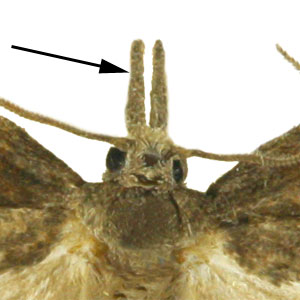 are extremely elongate in both sexes. Males have long cilia on the antennae, a hairpencil on the foreleg, and lack a forewing costal foldforewing costal fold:
are extremely elongate in both sexes. Males have long cilia on the antennae, a hairpencil on the foreleg, and lack a forewing costal foldforewing costal fold:
a flap or fold at the base of the forewing that contains specialized sex scales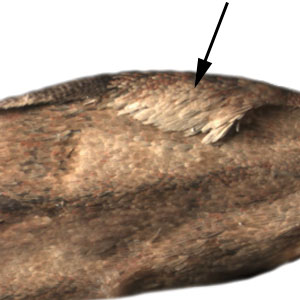 . The hindwing is white with pale brown strigulae.
. The hindwing is white with pale brown strigulae.
Male genitalia are characterized by the uncusuncus:
a sclerotized process which is fused to the posterodorsal margin of tergum IX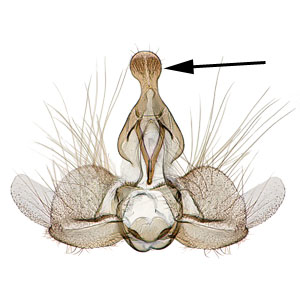 bearing a pair a subdistal pointed processes, giving it a trifurcate appearance; and valvaevalvae:
bearing a pair a subdistal pointed processes, giving it a trifurcate appearance; and valvaevalvae:
plural of "valva" with a moderately developed sacculussacculus:
with a moderately developed sacculussacculus:
the ventral margin of the male valva 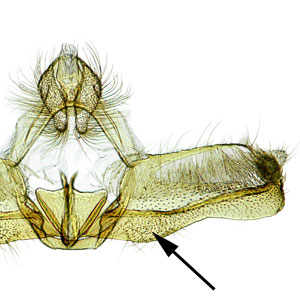 and long, spine-like setae on ventralventral:
and long, spine-like setae on ventralventral:
lower, to the bottom, on the under side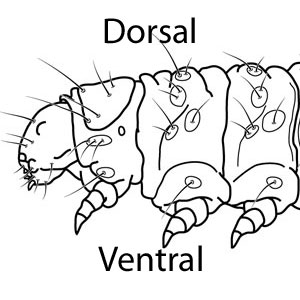 margin. Female genitalia are characterized by ostiumostium:
margin. Female genitalia are characterized by ostiumostium:
see ostium bursae 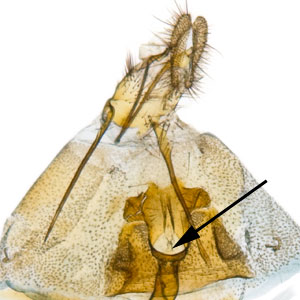 simple, small; ductus bursaeductus bursae:
simple, small; ductus bursaeductus bursae:
a membranous tube connecting the ostium bursae to the corpus bursae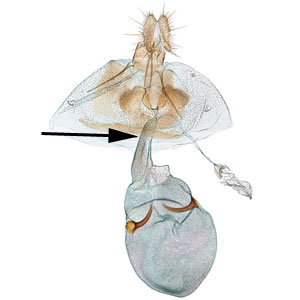 short; signumsignum:
short; signumsignum:
a sclerotized projection or patch on the interior of the corpus bursae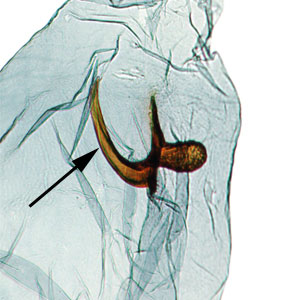 absent in the corpus bursaecorpus bursae:
absent in the corpus bursaecorpus bursae:
a dilated membranous sac at the anterior end of the bursa copulatrix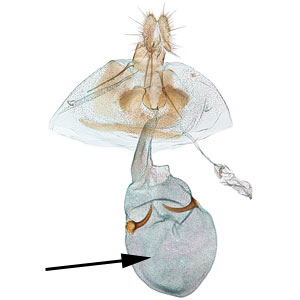 .
.
The following account is summarized from Brown & Nishida (2003).
Mature larva approximately 12-13 mm in length; head black in early instars before becoming orange with black laterallateral:
to the side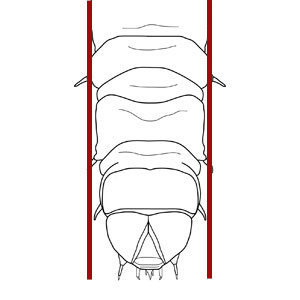 markings in final instars; prothoracic shieldprothoracic shield:
markings in final instars; prothoracic shieldprothoracic shield:
a sclerotized plate on the dorsal surface of the prothorax 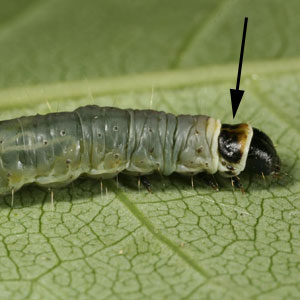 brownish yellow to reddish brown with pale-brown mottling; abdomen maroon (becoming lighter after each successive molt) with dark, large, conspicuous pinaculapinacula:
brownish yellow to reddish brown with pale-brown mottling; abdomen maroon (becoming lighter after each successive molt) with dark, large, conspicuous pinaculapinacula:
flattened sclerotized plates on a caterpillar that bear the setae .
.
Detailed figures of larval chaetotaxychaetotaxy:
the arrangement of setae (in reference to Lepidoptera larvae), often depicted on a "setal map"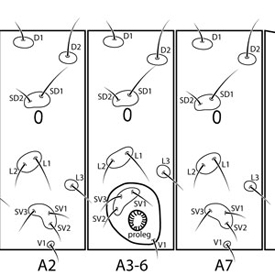 are available in Brown & Nishida (2003).
are available in Brown & Nishida (2003).
Seticosta rubicola is similar in forewing pattern to other species of Seti costacosta:
the anterior margin of each wing  , including S. aeolozona, S. arachnogramma, S. tridens, and S. tambomachaya. Male S. rubicola can be distinguished from these other species by a pair of laterallateral:
, including S. aeolozona, S. arachnogramma, S. tridens, and S. tambomachaya. Male S. rubicola can be distinguished from these other species by a pair of laterallateral:
to the side processes near the distaldistal:
processes near the distaldistal:
farthest from body, distant from point of attachment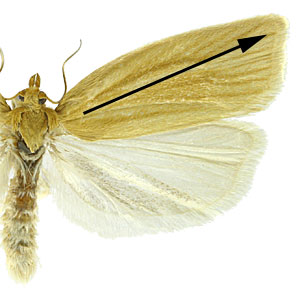 end of the uncusuncus:
end of the uncusuncus:
a sclerotized process which is fused to the posterodorsal margin of tergum IX and the lack of a dense patch of setae on the costacosta:
and the lack of a dense patch of setae on the costacosta:
the anterior margin of each wing  of the valvavalva:
of the valvavalva:
an appendage flanking the intromittent organ that is used to clasp the female during copulation 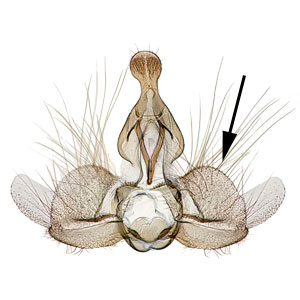 .
.
Larvae are distinguished by a combination of tortricine and olethreutine characters: SD1 and D1 on a shared pinaculumpinaculum:
singular of "pinacula"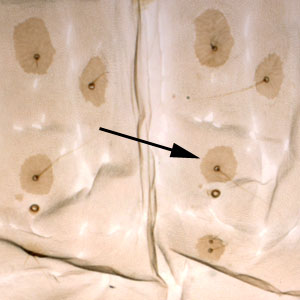 on A9; bisetose SV-group on A7; SD2 and SD1 on separate pinaculapinacula:
on A9; bisetose SV-group on A7; SD2 and SD1 on separate pinaculapinacula:
flattened sclerotized plates on a caterpillar that bear the setae on A1-8; V setae on A9 widely separated; meso- and metathoraxmetathorax:
on A1-8; V setae on A9 widely separated; meso- and metathoraxmetathorax:
the most posterior thoracic segment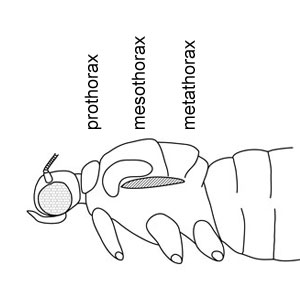 with extra SD, L, SV, and V setae; A1-8 with extra D and V setae; D pinaculapinacula:
with extra SD, L, SV, and V setae; A1-8 with extra D and V setae; D pinaculapinacula:
flattened sclerotized plates on a caterpillar that bear the setae on A2-5 notched; and L pinaculumpinaculum:
on A2-5 notched; and L pinaculumpinaculum:
singular of "pinacula" on prothoraxprothorax:
on prothoraxprothorax:
the most anterior thoracic segment ventrad of the spiracle
ventrad of the spiracle
The following account is summarized from Brown & Nishida (2003).
Adults of Seticosta rubicola have been collected in nearly every month in central Costacosta:
the anterior margin of each wing  Rica, suggesting continuous generations throughout the year.
Rica, suggesting continuous generations throughout the year.
Larvae bore into stems and induce gall formation. Galls are fusiform, approximately 4-6 mm wide, 12-40 mm long, and are located between nodes on the terminal (young) portions of the stem. One gall contains a single larva. An opening at the base of the gall is often covered in frass and debris; this entrance hole can be detected before the stem begins to swell. Pupation most likely occurs outside of the gall.
Seticosta rubicola feeds on Rubus and is considered a serious pest of blackberry in parts of Costacosta:
the anterior margin of each wing  Rica. Larvae have been intercepted on Rubus arriving at U.S. ports-of-entry from Guatemala.
Rica. Larvae have been intercepted on Rubus arriving at U.S. ports-of-entry from Guatemala.
| Host plant | Host plant family | Reference(s) |
| Rubus eriocarpus | Rosaceae | Brown & Nishida 2003 |
| Rubus vulcanicola | Rosaceae | Brown & Nishida 2003 |
| Rubus sp. | Rosaceae | Brown & Nishida 2003 |
View full screen host table here
Seticosta rubicola has been reported from Costacosta:
the anterior margin of each wing  Rica and Guatemala.
Rica and Guatemala.